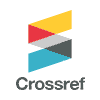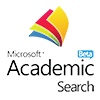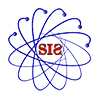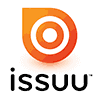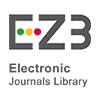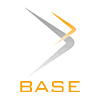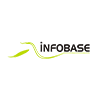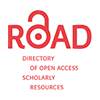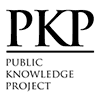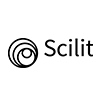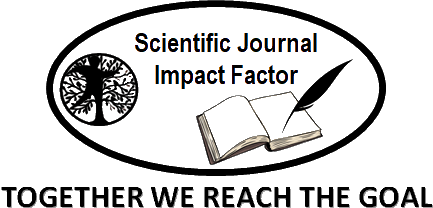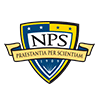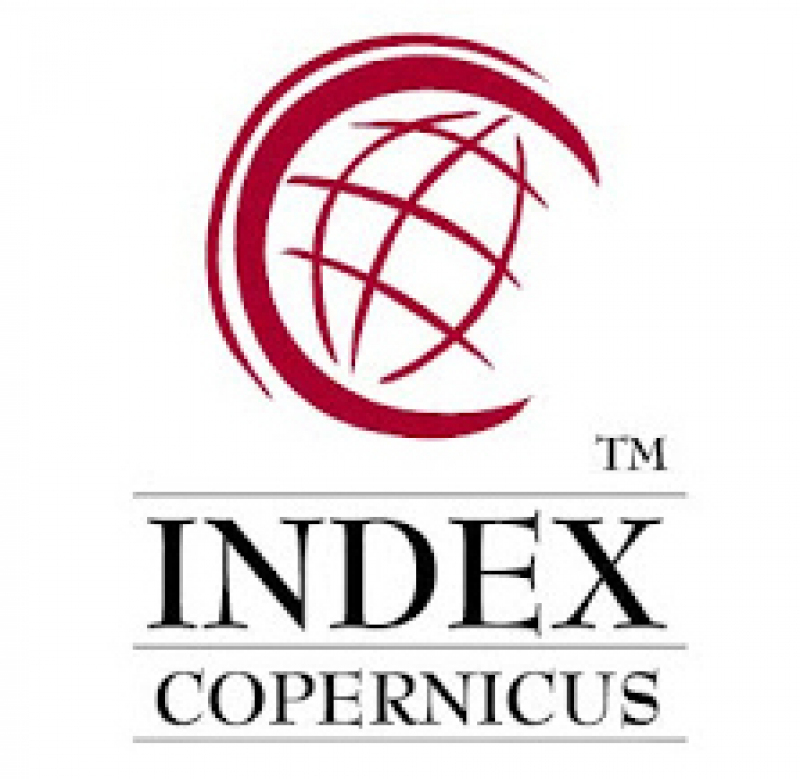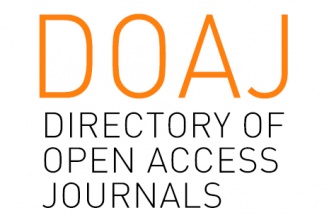The Influence of the Realistic Mathematics Education Approach with Metacognitive Strategy Towards Mathematics Literacy Ability and Adversity Quotient Students
Abstract
This research aims to describe the influence of the Realistic Mathematics Education (RME) approach combined with Metacognitive Strategies in mathematics learning on students' mathematical literacy and adversity quotient in class VII at a private junior high school in Yogyakarta City. This type of research is a quasi-experiment with population design of all clas VII students. Data collection for this research used test and non-test (questionnaires) The test was used to measure students' mathematical literacy skills, and the questionnaire was used to measure students' adversity quotient, with reliability coefficients of 0.67 and 0.77, respectively, falling within the high reliability qualification. The data analysis technique used are descriptive and inferential. Test Hotteling’s used to determine the effect of realistic mathematics education approach and metacognitive strategy on the dependent variable, and test two independent sample t-test used to find out what the realistic mathematics education approach and metacognitive strategy influence one each dependent variable. Based on hypothesis testing at significant level of 5%, it is found that realistic mathematics education approach influence the ability to mathematics literacy and adversity quotient students together. This research result also show that realistic mathematics education approach influence on each dependent variable in terms of the average score of mathematics literacy and adversity quotient students. In addition, the inference of 95% confidence interval for the mean difference show that the RME approach with metacognitive strategy is better than the saintific approach.
Keywords
Full Text:
PDFReferences
Abdul Syukur, I. (2014). Profesionalisme Guru dalam Mengimplementasikan Teknologi Informasi dan Komunikasi di Kabupaten Nganjuk. Jurnal Pendidikan Dan Kebudayaan, 20(2), 200–210. https://doi.org/10.24832/jpnk.v20i2.138
Anindita, A. D., Pd, P. H. M., Siagian, P. P., & Pd, M. (2021). Development of Learning Tools Based on Online Realistic Mathematics Education to Improve Critical Thinking Ability and Adversity Quotient of Students in MAN 1 Medan. Journal of Education and Practice, 12(2), 77–81. https://doi.org/10.7176/jep/12-2-11
Ayunis, A., & Belia, S. (2021). Pengaruh Pendekatan Realistic Mathematics Education (RME) Terhadap Perkembangan Literasi Matematika Siswa di Sekolah Dasar. Jurnal Basicedu, 5(6), 5363–5369. https://doi.org/https://doi.org/10.31004/basicedu.v5i6.1508
Budiono, C., & Wardono. (2014). PBM Berorientasi PISA Berpendekatan PMRI Bermedia LKPD Meningkatkan Literasi Matematika Siswa SMP. Unnes Journal of MathematicsEducation, 3(3), 210–219.
Fauzana, R., Dahlan, J. A., & Jupri, A. (2020). The influence of realistic mathematics education (RME) approach in enhancing students’ mathematical literacy skills. Journal of Physics: Conference Series, 1521(3). https://doi.org/10.1088/1742-6596/1521/3/032052
Freudenthal, H. (2006). Revisiting mathematics education: China lectures (Vol. 9).
Herliani, E. F., & Wardono. (2019). Perlunya Kemampuan Literasi Matematika Ditinjau Dari Gaya Kognitif dalam Pembelajaran Realistic Mathematics Education (RME). PRISMA, Prosiding Seminar Nasional Matematika, 2, 234–238.
Hewi, L., & Shaleh, M. (2020). Refleksi Hasil PISA (The Programme For International Student Assesment): Upaya Perbaikan Bertumpu Pada Pendidikan Anak Usia Dini). Jurnal Golden Age, 4(01), 30–41. https://doi.org/10.29408/jga.v4i01.2018
Holis, M. N., Kadir, & Latief, S. (2016). Deskripsi Kemampuan Literasi Matematika Siswa Smp Di Kabupaten Konawe. Jurnal Penelitian Pendidkan Matematika, 4(2), 141–152. http://ojs.uho.ac.id/index.php/JPPM/article/view/3070
John H Flavell. (1979). John H. Flavell, Metacognition and Cognitive Monitoring: A New Area of Cognitive-Developmental Inquiry. American Psychologist, 34(10), 906–911. https://www.semanticscholar.org/paper/Metacognition-and-Cognitive-Monitoring%3A-A-New-Area-Flavell/ee652f0f63ed5b0cfe0af4cb4ea76b2ecf790c8d
Kadir, & Masi, L. (2014). Penggunaan Konteks dan Pengetahuan Awal Matematika dalam Pembelajaran Keterampilan Berpikir Kreatif Siswa Using Context and Mathematical Prior Knowledge in Learning Students ’ Creativity Thinking Skills. Jurnal Pendidikan Matematika, 5(1), 52–66.
Kemdikbud. (2023). Rapor Pendidikan Indonesia Tahun 2023. Merdeka Belajar, 2023. https://raporpendidikan.kemdikbud.go.id/login
Manizade, A. G., Buchholtz, N., & Beswick, K. (2023). The Evolution of Research on Teaching Mathematics: International Perspectives in the Digital Era: Introduction. Springer Cham. https://doi.org/10.1007/978-3-031-31193-2_1
Masjaya, & Wardono. (2018). Pentingnya Kemampuan Literasi Matematika untuk Menumbuhkan Kemampuan Koneksi Matematika dalam Meningatkan SDM. PRISMA, Prosiding Seminar Nasional Matematika, 1, 568–574.
Melda Maulyda, A. M. (2023). Penerapan Pendekatan Realistic Mathematics Education (RME) untuk Meningkatkan Kemampuan Literasi Matematis Siswa. Jurnal Pendidikan Matematika, 13(1), 56–67. https://doi.org/10.23969/pjme.v13i1.7566
Ningsih, S. (2014). Realistic Mathematics Education: Model Alternatif Pembelajaran Matematika Sekolah. JPM IAIN Antasari, 01(2), 73–94.
Nisa, F. K., & Arliani, E. (2023). Junior high school students’ mathematical literacy in terms of mathematical self-efficacy. Jurnal Elemen, 9(1), 283–297. https://doi.org/https:/doi.org/10.29408/jel.v9i1.7140 J
Nisa, F., & Elvis, R. E. (2020). Analysis of Critical Mathematical Thinking Ability and Adversity Quotient Students Through Realistic Mathematics Approach in SMP Negeri 3 Stabat. Journal of Education and Practice, 11(17), 156–162. https://doi.org/10.7176/jep/11-17-17
Novalia, E., & Rochmad. (2017). Analisis Kemampuan Literasi Matematika dan Karakter Kreatif pada Pembelajaran Synectics Materi Bangun Ruang Kelas Viii. Unnes Journal of Mathematics Education Research, 6(2), 225–232.
OECD. (2017). How does PISA for Development measure mathematical literacy? PISA for Development Brief, I(February 2014), 0–1.
OECD. (2024). Pisa 2022. In Perfiles Educativos (Vol. 46, Issue 183). https://doi.org/10.22201/iisue.24486167e.2024.183.61714
Pratiwi, D. A., Trapsilasiwi, D., Oktavianingtyas, E., Sunardi, & Murtikusuma, R. P. (2022). Level Literasi Matematika Siswa dalam Menyelesaikan Soal PISA Konten Change and Relationship Berdasarkan Gaya Kognitif. Saintifika, 22(1), 39–51.
Putri, A., Sumardani, D., Rahayu, W., Hajizah, M. N., & Rahman, A. (2020). Kemampuan Literasi Matematika Menggunakan Bar Model Pada Materi Aljabar. AKSIOMA: Jurnal Program Studi Pendidikan Matematika, 9(2), 338–347. https://doi.org/https://doi.org/10.24127/ajpm.v9i2.2744
Putri, R. I. I., & Zulkardi, Z. (2018). Higher-order thinking skill problem on data representation in primary school: A case study. Journal of Physics: Conference Series, 948(1). https://doi.org/10.1088/1742-6596/948/1/012056
R Core Team. (2024). R: A Language and Environment for Statistical Computing. In R Foundation for Statistical Computing. https://www.r-project.org/
Rahmawati, W. A., Usodo, B., & Fitriana, D. L. (2021). Mathematical Literacy Skills Students of the Junior High School in Solving PISA-Like Mathematical Problems. IOP Conference Series: Earth and Environmental Science, 1808(1), 0–10. https://doi.org/10.1088/1742-6596/1808/1/012045
Rifai, & Wutsqa, D. U. (2017). Mathematical Literacy of State Junior Secondary School Students in Bantul Regency. Jurnal Pendidikan Matematika Dan Sains, 6(2), 152–162. http://journal.uny.ac.id/index.php/jpms
Sumirattana, S., Makanong, A., & Thipkong, S. (2017). Using realistic mathematics education and the DAPIC problem-solving process to enhance secondary school students’ mathematical literacy. Kasetsart Journal of Social Sciences, 38(3), 307–315. https://doi.org/10.1016/j.kjss.2016.06.001
Wigati, T., Wardono, W., & Purwanti, E. (2020). Analysis of Mathematical Literacy Skills through PMRI Approaches of Elementary School Students. Journal of Primary Education, 9(3), 303–310. https://doi.org/10.15294/jpe.v9i3.39212
Wijaya, A., van den Heuvel-Panhuizen, M., & Doorman, M. (2015). Opportunity-to-learn context-based tasks provided by mathematics textbooks. Educational Studies in Mathematics, 89(1), 41–65. https://doi.org/10.1007/s10649-015-9595-1
Wijaya, A., van den Heuvel-Panhuizen, M., Doorman, M., & Robitzsch, A. (2014). Difficulties in solving context-based PISA mathematics tasks: An analysis of students’ errors. Mathematics Enthusiast, 11(3), 555–584. https://doi.org/10.54870/1551-3440.1317
Wulandari, N. F. (2018). Mathematics Skill of Fifteen Years Old Students in Yogyakarta In Solving Problems Like Pisa. Journal on Mathematics Education, 9(1), 129–144.
DOI: http://dx.doi.org/10.18415/ijmmu.v12i11.7166
Refbacks
- There are currently no refbacks.
Copyright (c) 2025 International Journal of Multicultural and Multireligious Understanding

This work is licensed under a Creative Commons Attribution-NonCommercial-NoDerivatives 4.0 International License.
https://ijmmu.com
editor@ijmmu.com
facebook.com/ijmmu
Copyright © 2014-2018 IJMMU. All rights reserved.







